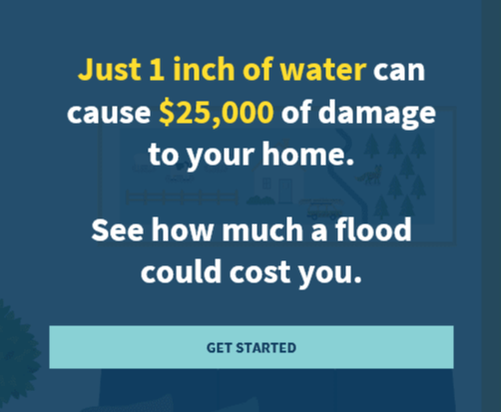Open Door Insurance Services Blog |
|
The following is an update on the California home insurance situation from the non-profit consumer organization, United Policyholders, (“UP”). UP is working hard to help California property owners stay insured and financially protected despite unprecedented availability and affordability challenges in the current marketplace. Reducing wildfire risk is more important than ever for suburban and rural property owners. We believe the situation will eventually improve, but here’s where we are in the here and now. Below you’ll find links to shopping guidance and updates on a few of our related workstreams. Bottom line: As soon as you get a non-renewal notice, start shopping, and don’t go on rumors. Dig for options, be patient. Insurers are still in the CA market but with strict limits/quotas on how many policies they’ll sell in given areas. Your fallback is the Fair Plan, flawed as it may be, it’s coverage. If an insurance agent tells you that your only option is the Fair Plan, we recommend contacting at least one other agent who may lead you to other potential options. We encourage you to share these resources with your neighbors ·Updated shopping tips: www.uphelp.org/buying-tips/updated-home-insurance-shopping-tips-2023/ · What to do if you’ve been non-renewed: www.uphelp.org/droppedCA ·Resources for reducing your wildfire risk and increasing your home’s insurability: www.uphelp.org/WRAP ·Options through the California Fair Plan (CFP): www.uphelp.org/CFP. NOTE: If your home meets the IBHS Wildfire Prepared Home or Safer From Wildfires standards, you are eligible for a Fair Plan premium discount of up to 14.5%. Big Picture: https://uphelp.org/bach-talk-an-insured-future-depends-on-bold-public-private-innovation/ · As soon as you get a non-renewal notice, start shopping - don't procrastinate! · Seek out a seasoned insurance broker with access to multiple options. · Do as much mitigation as you can to reduce the risk of your home being damaged or destroyed in a severe weather event. Seek out programs in your community that offer mitigation help and/or grants. · Provide your insurer with documentation of completed mitigation steps and/or your community’s risk reduction activities. · Get quotes for different deductible levels and make an informed decision: A higher deductible reduces your premium. With too high a deductible your insurance won’t cover even a moderate-sized claim. · Avoid making small claims. Your claim history impacts your risk score. Your risk score impacts your insurance options and costs. · Try and reduce/eliminate coverage you can live without (e.g. high dollar limits on Contents/Personal Property, Other Structures). · If you can't find a known brand insurer willing to insure your home, research the financial strength of the companies that offer you quotes. · If a state-sponsored insurance plan is your only option, consider supplemental policies to fill coverage gaps. Tried and true tips: · Bundle your home, auto and/or umbrella policies. · Ask what discounts you may qualify for. · Comparison shop as much as feasible. · Aim to insure your property for its replacement value, even if that means you don’t pick the cheapest policy. · Ideally, buy insurance that covers risks in your region (floods, earthquakes, hurricanes, hail). What can an insurance agent or broker do to help me? · Put in the time to seek out the best available options. · Identify insurance options that are only available through a broker. · Help you make good decisions and save money. · Tailor your coverages to your specific situation and needs. · Walk you through options available through non-standard (“non-admitted” “excess/surplus”) or government-sponsored programs. · Possibly offer a premium financing plan. Flood Insurance? Now?
Flood Insurance has a mandatory 30 day waiting period from the date you purchase it – meaning you can’t “time” buying flood insurance based on a weather report or an impending flood or storm. Whether it is from summer snowmelt or you want to purchase protection before rates go up in the fall, now is a good time to starting looking into flood coverage! Whether you're a renter or a property owner, take a moment to consider adding flood insurance to your financial safety net. Bottom line: basic home and renters policies don't cover flood repairs, but you can fill that protection gap. Not sure if you have flood risk? Take this quiz. Home insurance prices are at an all-time high in many parts of the US today, but protecting your assets is still so important. If you're not in a high flood risk area, adding that protection won't be a budget buster. If you have an NFIP policy but are considering dropping it, make an informed decision before you do. Flood insurance details: · You can add flood coverage through a private flood insurer or the National Flood Insurance Program (“NFIP”). · There will be a waiting period from the date you buy it to the date it kicks in. (30 days for an NFIP policy). · Flood insurance can be very affordable, depending on your location. · Use this link to learn about your area's flood risk, contact an insurance agent or call the NFIP at 877-336-2627. · If you have a mortgage and your home is in a “Special Hazard Flood Zone” your lender will require flood insurance. · An NFIP policy provides $250,000 max to repair flood damage to your home. · An NFIP policy provides $100,000 max for belongings but not automatically. You have to ask and pay for this additional coverage. · An NFIP policy will NOT cover temporary rent if your home is uninhabitable after a flood. Most private flood policies cover that expense. Contact your insurance agent or company and ask: · How much will it cost to insure my home and belongings for flood damage? · Can you help me compare the cost, coverages and options in an NFIP versus adding coverage to my existing policy through a "flood endorsement" or private flood insurer? · Would a flood rider or endorsement give me more than $250,000 in coverage? Will it cover temporary rent?
As most, if not all, of you know by now, flood damage is not covered by your home or business owners policy. Insurance companies began excluding flood damage in the 1960’s and the trend continued and extended so that today nearly all property policies exclude flood and flood related damages. In response the federal government and the lending and insurance industries created the National Flood Insurance Program to address the coverage gap. Lenders now require that you purchase flood coverage if you’re in a primary flood zone. That’s good news for many people who might not have purchased coverage had they not been required to do so. However even the folks with flood insurance are finding that it’s not going to cover all of their losses.
Here are some VERY important things to know about these policies: - Contents coverage is not included, you must purchase it in addition to the building coverage. - There is no coverage for loss of use, loss of rents, or loss of income due to flood damage. - There is no coverage for pools, spas, hot tubs, or decks (other than what’s required by code to access the building). - There is limited coverage for detached garages, and no coverage for any other type of detached structure (granny units, sheds, barns) - There is no coverage for landscape, trees, outdoor furniture, propane tanks, or fences. - If you have an elevation certificate and are paying a reduced rate based upon the “elevated living area” there isn’t coverage for the stuff (contents) below that elevated area. - If you’ve been paid for flood damage you need to keep proof of the repairs or you won’t be able to claim those losses again in the future. Be sure to keep good records of all the repairs you make and receipts for any property you replace. - Flood claims follow the property, not the property owner, so if your property has a history of flood claims before you purchased it, you’re still going to need to know about those prior claims and the repairs that were made after the flood. - There is no coverage for moisture, mildew, or mold that could have been avoided by the property owner. So, that’s an outline of what isn’t covered. But there are a few things that are covered that you might not be aware of: - Flood loss avoidance is included in all flood policies and will cover up to $1000 in reasonable expenses incurred to protect policyholders’ insured property and up to $1000 to move property to safety. - Expenses to protect your property includes things like sandbags, water pumps, sheeting and lumber and the labor used in connection with any of these items. - You may claim labor for yourself and family members at the federal minimum wage. You may also pay others at the same wage. - Expenses to move your property to safety includes labor and storage costs up to $1000. - Keep in mind that it must be placed in a fully enclosed building or otherwise protected from the elements and stored above ground level. - There is no deductible for either of these $1000 coverages - Property removed is covered by your flood policy for 45 days from the date of moving it (just in case you move it to another location that also ends up flooding-which has totally happened!). - Most NFIP policies include Increased Cost of Compliance (ICC) Coverage which applies when flood damages are sever. It provides up to $30,000 of the cost to elevate, demolish, or relocate your home if it’s “substantially damaged” or “repetitively damaged” by a flood. This coverage doesn’t increase your limits. - If you have contents coverage, the coverage also applies to contents located in an outbuilding (regardless of the elevation of that building) - Excess flood policies are available for higher value homes that need more coverage than the $250,000 offered through NFIP. - Excess flood policies will also offer higher contents coverage than the $100,000 available on the NFIP policy. As always, if you’ve got questions about your policy or you want to get a flood insurance quote feel free to contact our office. We’re here and our door is open. Call us at 707-874-2666, stop by our office in Occidental, visit www.opendoorins.com or find us at our social media sites @opendoorins California insurance industry regulations require regular payroll reviews to make sure you are charged the correct amount of premium for the policy period and to verify your business operations.
State Fund has created a video to walk policyholders through the premium audit process and explain how audits work, why they are necessary, and what to expect. This video will help them understand why workers’ compensation audits are done, and how they can prepare for one. |
Contact Us(707) 874-2666 Archives
April 2024
Categories |




 RSS Feed
RSS Feed